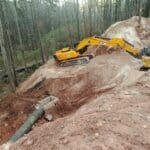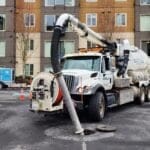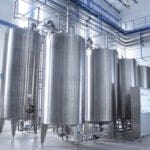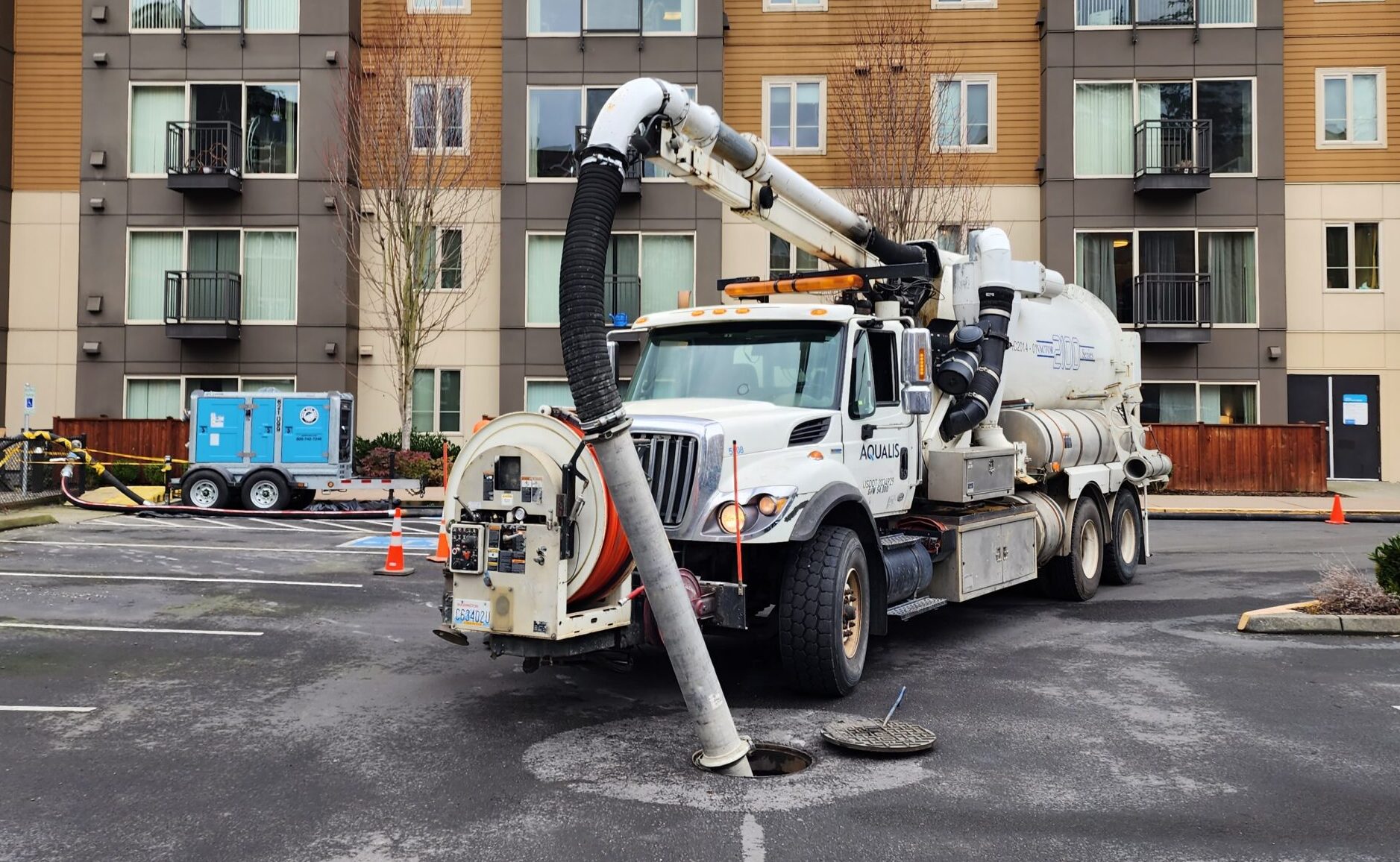Industrial Vacuumation Explained
Understanding Vactor Trucks
Industrial vacuumation and jetting trucks are multi-functional vehicles used for cleaning underground infrastructure. By using both suction and high-pressure water, these trucks are ideal for non-invasive maintenance.
There are many variations of these trucks, providing both vacuumation and jetting or only one. Vacuumation alone may not be sufficient for lodged debris so jetting is often chosen for breaking up blockages like tree roots, calcified mineral deposits or compacted/hardened concrete slurry as the force can be targeted directly at the issue. Combination trucks perform both services simultaneously, which may not be necessary for more specific projects.
A vactor truck is designed for the purpose of clearing debris from underground infrastructure. These trucks have a large, high-pressure pump able to release up to 3,000 PSI (pounds per square inch) of water and a large debris tank designed to hold up to 15 cubic yards of liquified waste and transport it efficiently to a regulated disposal facility. Our trucks have the ability to create a vacuum in two ways, through the use of positive displacement (PD) blower or through a secondary, auxiliary motor to create enough suction to vacuum the liquid and sludge from pipes, tanks, vaults and other underground systems. Once the sludge is removed from the infrastructure, it is held in the tank and transported to an appropriate disposal site. Vactor and jetting services provide a safe and cost-effective method of cleaning underground assets as they can eliminate the need for confined space entry in systems.
Industrial vacuumation is used in stormwater and wastewater infrastructure as preventative maintenance and for repairs. Over time sludge naturally builds up in underground pipes due to sediment and debris. This material is often found in stormwater and wastewater pipes as leaves and trash are caught in the conveyance of water and brought to stormwater control measures like ponds, catch basins and inlets. Trash racks and grates are installed in SCMs to act as a line of defense against floatable debris. Even with these preventative measures, over time the debris collects inside the infrastructure and clogs the flow of water. Additionally, intrusions like roots can crack the pipes and need to be removed via jetting before repairs can begin. Regular inspections can determine if cleaning the pipes and underground infrastructure is needed to protect your assets from excessive buildup that can lead to flooding and clears intrusions before they lead to severe safety issues like sinkholes or damaged pipes.
Anatomy of a Vactor Truck
Industrial vacuumation and jetting truck components vary based on the services needed. The truck has a storage tank, a length of hose for jetting, a suction hose or boom and a pump. The boom is incorporated to allow the truck to access the underground point. The amount of pipeline that can be cleaned at a time is determined by the length and diameter of the hose, the type and volume of material being removed, as well as the diameter of the pipe being cleaned. At the end of the hose is a jet nozzle that targets the high-pressure water at blockages inside the pipes. There are various types of jetting nozzles based on the intended goal of the cleaning and the components of the blockage. The most commonly designed nozzle has a centralized high-pressure stream pointed forwards and a wide spray aimed backwards in a cone shape that scrapes the walls of the pipe and propels the sludge toward the open manhole. The truck also has a large, telescopic boom that is placed inside the manhole or catch basin that vacuums the sludge from the pipes. A spoils tank is mounted on the truck to hold the slurry that is collected from the pipes.
To operate the truck, trained personnel guide the hose and boom to the entrance of the pipe or vault, often through a manhole. Once activated, a force of water shoots through the nozzle breaking up the contents of the pipe, vault or lift station. Because of the strong water pressure, the water loosens all debris including rocks, roots, trash and grease. The jetter hose is propelled forward via the pressure of the backwards spray. This water is pushed backwards at approximately a 30-degree angle to clean the sides of the pipe and send the slurry towards the operator.
The vactor truck uses air pressure to create suction, similar to household vacuums. The pump on the truck spins a fan that pulls air from inside of the tank to the outside which creates a negative pressure inside the tank and pulls air and sludge from the boom at the other end. The sludge is housed in the tank temporarily and the vacuum suction continues until the tank reaches full storage capacity measured via valves. The trucks that have the ability to both vacuum and jet pipes have two tanks; one for the slurry water being pulled from the pipeline and one with clean water for jetting. On larger jobs, there may be a need for additional storage capacity and therefore multiple trucks to collect sludge.
Flow of the water is measured using PSI (pressure per square inch) and GPM (gallons per minute). PSI is always important for vac truck operators to be aware of as it is a measurement of the pressure inside the jetting hose. Understanding the PSI is important from a safety standpoint and therefore the operator should perform daily checks on the gauges, hoses and fittings to ensure that safety for all. In most cases, the water used from jetting comes from the municipal water supply accessed through fire hydrants. In this instance especially, the GPM and PSI must be measured to comply with the regulations established by the city and the parameters of the equipment’s threshold to not damage the components.
Uses of a Vactor Truck
In combination with CCTV, vactor and jetting services clean pipes in order for professionals to accurately evaluate the health of the structure. CCTV is then implemented to visually inspect the asset once it is cleaned. Regular jetting and vacuumation is an essential part of a successful asset management plan for your underground infrastructure. The buildup of debris over time will cause flooding and overflows in your stormwater or wastewater system. Quarterly vactor services may be necessary in your area for the success of your stormwater system, in mild climates, biannual vactor service is recommended.
Vactoring pipes is also essential for pipeline repairs. When repairing pipes via cured in place technology, pull-in place technology or slip lining, the pipeline must be totally clear for a successful repair. Vacuum and jetting trucks are also crucial for inspections and repairs. These practices are used in conjunction with CCTV (closed circuit television) inspections. To properly inspect underground infrastructure, a stormwater or wastewater professional will use a combination of vac trucks and CCTV to visualize the pipes in a non-invasive method. Once potential blockages are cleared from the pipes, technicians will send a remote-controlled camera through the infrastructure. Once the CCTV operator knows the quality of your infrastructure, they can recommend potential repairs based on the health of your pipes.
Another service available with these trucks is hydro-excavation. Hydro-excavation also uses high pressure water and may be available with jetting trucks. Hydro-excavation is used to expose underground utilities, also called daylighting. The jetting nozzle is held by a trained professional and aimed at the ground to break up the surface and dig layers into the earth. The vacuumation boom is then pushed along the new hole to remove the dirt slurry. Hydro-excavation is an alternative to conventional excavation as it is less dangerous and more accurate. The water can be heated to loosen frozen ground and will not break utility lines and pipes the way mechanical excavators can. Afterwards, the slurry can be pumped back into the ground to cover the utilities once again.
Stormwater services are often interconnected, AQUALIS provides comprehensive services to efficiently evaluate your property, recommend maintenance or repairs and restore your systems to full functionality. Schedule a consultation today to understand about a potential maintenance plan for your underground infrastructure.
 Kenosha, Wis. Highway KR Regenerative Stormwater ConveyanceThe Root-Pike Watershed Initiative Network Kenosha County, and others worked with AQUALIS to design and implement an innovative solution for stormwater control along Highway KR.
Kenosha, Wis. Highway KR Regenerative Stormwater ConveyanceThe Root-Pike Watershed Initiative Network Kenosha County, and others worked with AQUALIS to design and implement an innovative solution for stormwater control along Highway KR. Durham, N.C. Sinkhole Leads to Stormwater System RehabilitationThe tenant on this property noticed a depression that opened to the ground below and notified the property owners.
Durham, N.C. Sinkhole Leads to Stormwater System RehabilitationThe tenant on this property noticed a depression that opened to the ground below and notified the property owners.

